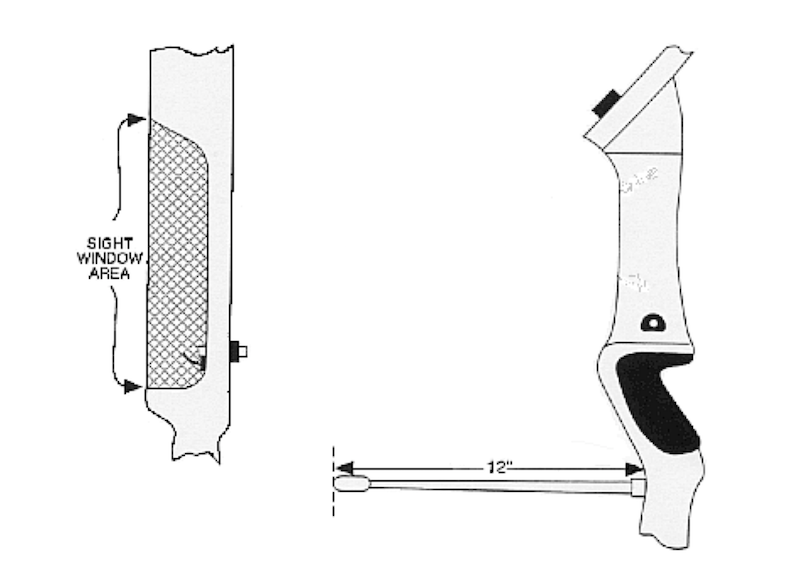Competitive archery features several equipment styles, ranging from longbows with wooden arrows to tricked-out compounds with space-age arrows.
New to archery? Explore its many options in this Archery 360 video.
If you’re drawn to compound bows, you can choose from two main divisions in competitive archery: “open” and “bowhunter.” Equipment rules set them apart. The open class has fewer equipment restrictions, so competitors can use long stabilizers and magnified sights, and adjust their sights throughout the competition. The bowhunter class, aka hunter class, restricts competitors to short stabilizers and sights with no magnification, and they can’t adjust their sights once the competition begins.
The restrictions apply to accessories, not bows. You don’t have to use a hunting bow for the bowhunter division, but many competitors do. You can use a brightly colored target bow, as well as target-style hinge, thumb-button, or tension-activated releases. Your bowhunter class bow is allowed in 3D, field, indoor and collegiate archery.
The bowhunter division is ideal for those who want to compete with a bow they know well. That class is also excellent for beginners because they can compete with an off-the-rack bow without adding accessories. As you advance, you can add a short stabilizer and upgrade your other accessories.
To start competing, choose the style you want to pursue. Indoor archery is a great way to begin because you shoot targets at 20 yards, and you can choose from many indoor tournaments near and far. Contact an archery shop to learn about upcoming events and the rules each event follows. You can also study the rules on the organization’s website. Below you’ll find bowhunter class rules for some popular organizations.
Archery Shooters Association

Fixed-Pin Class Equipment Rules for Adults, Young Adults and Youths:
Sights — Fixed pins, no limit to their number. Movable sights can be used, but must be locked into a fixed position that’s verified by the group before competing. Magnification isn’t allowed in any 30-yard fixed-pin class, but it’s permitted in all 40-yard pin classes. Clarifiers or verifiers in the peep are allowed because they don’t magnify the sight.
Stabilizers — A front stabilizer or a system that includes quick releases, enhancers and/or weights can be used, but cannot exceed 12 inches in length from the tip of the stabilizer (or system) to its attachment point on the front of the factory-provided riser. A rear stabilizer or back-bar system (V-bar) of any length can be used.
National Field Archery Association

Freestyle Bowhunter
Up to five sight pins can be used.
Release aids are permitted.
Sight-pin guards and a level are allowed.
One anchor point is permitted.
All arrows must be the same weight, length, diameter and fletching.
Stabilizers less than 12 inches long (from the back of the bow) are permitted.
Stabilizers, V-bars, stabilizer couplings, and counter balances can be used.
No equipment adjustments are allowed during a round.
International Bowhunting Organization

Compounds, recurves or longbows shot with or without sights are allowed. The sight can have fixed pins, cross-hairs or circle-style pins without a lens or magnification. All circles on circle-style pins must be the same size. A sight can have a rear aperture (i.e., peep sight or fixed rifle-type sight). Sights cannot be adjusted after entering the shooting course. Arrows must have screw-in points and at least three feathers or vanes no less than 2 inches long (measured minimum 1.75 inches). Only one stabilizer or stabilizer system with one attachment can be used. The stabilizer can be any shape or configuration as long as it’s contained within a theoretical sphere with a radius of 12 inches measured from the attachment point.
Additional V-bars, counter balances, or weighted attachments are prohibited. (Any device adding length or weight to the stabilizer is considered part of the stabilizer and subject to the 12-inch rule.) Unweighted vibration dampeners are not considered to be stabilizers, but unweighted vibration dampeners attached to the stabilizer are measured as a part of the stabilizer and subject to the 12-inch rule.
Equipment in this class can be shot with a release, finger tab or shooting glove.
USA Archery and Collegiate Archery
USA Archery adheres to the compound division of World Archery rules with these exceptions:
Sights: Any sight pin or ring can be used if it isn’t magnified. Clarifiers and verifiers are permitted. No equipment adjustments are allowed during a round.
Stabilizers: A front stabilizer — or a system including quick releases, enhancers and/or weights — can be used, but cannot exceed 12 inches in length from the tip of the stabilizer (or system) to the attachment point on the front of the factory-provided riser. A single rear stabilizer or one counter-balance weight system can be used, with no restriction in length as measured from the attachment point on the riser. These events follow outer 10-ring scoring for indoor shooting.
Note: The U.S. National 3D Collegiate Championship event follows Archery Shooters Association equipment rules.




